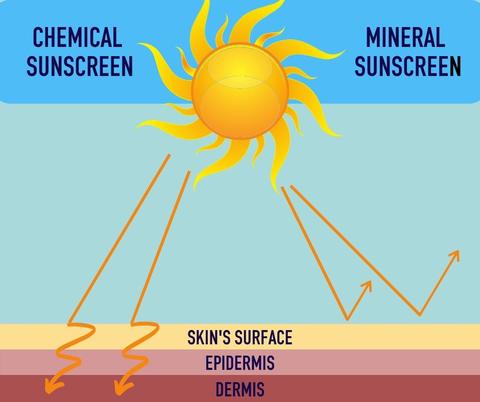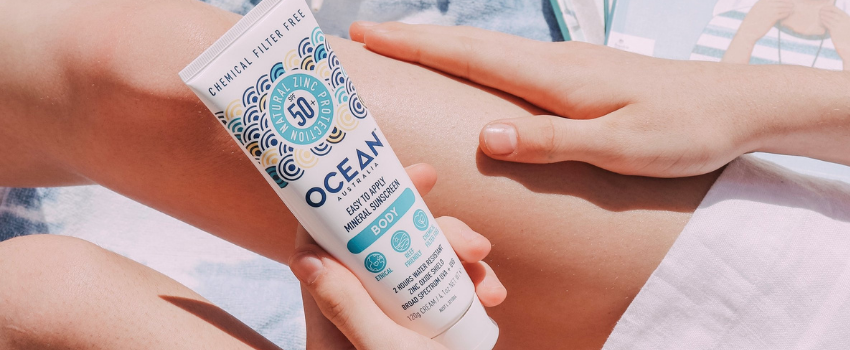What makes Ocean Australia different
Why is mineral sunscreen a better choice than chemical sunscreen?
Read on to learn about the benefits of Ocean Australia, and to help you make the right decision for your family and the planet.

Chemical filter free
There are two types of sunscreen, chemical and mineral, and they work in very different ways. Chemical sunscreens contain filters such as avobenzone, oxybenzone, octinoxate, and homosalate, which only start protecting you once the UV rays have been absorbed by your skin. Chemical filter free, aka mineral sunscreens, use mineral filters to reflect the sun's UV rays - so, not only do the rays not get absorbed by your skin - they bounce right off! Read on to find out more about how Ocean Australia's natural zinc shield works to protect your skin, without hurting the planet.
Mineral sunscreen
A mineral sunscreen is a sunscreen that uses an active mineral (not chemical) ingredient to shield skin from the sun's harmful UV rays. In Ocean Australia's case, their only active ingredient is zinc oxide, which has not been shown to damage ocean life and threaten coral reefs in the way that many chemicals in chemical filter sunscreens do.
SPF (Sun Protection Factor)
This number tells you how much ultraviolet (UV) radiation a sunscreen filters out. The higher the number, the higher the percentage of harmful rays are filtered out. For example, SPF 30 filters out 96% of UV rays, while SPF 50+ filters out at least 98%. (What do we mean by at least? Sunscreen labelled SPF 50+, like every Ocean Australia sunscreen, has to provide at least SPF 60 throughout testing.)
Broad Spectrum UVA + UVB
UVA and UVB are the two types of UV radiation that can damage the skin and cause cancer. UVA rays affect the cells under the skin’s surface by deeply penetrating the skin. These rays are responsible for visible signs of damage like wrinkles, and they also contribute to skin cancer. UVB radiation penetrates the top layer of skin and is the main cause of skin damage and skin cancer. Ocean Australia makes broad spectrum sunscreen, which filters out both.
Dermatologically tested
Dermatological testing takes place on human volunteers and assesses a product’s potential to irritate skin. Products are repeatedly applied to skin, left on for at least 24 hours and then the skin is assessed by a qualified dermatologist. Test groups always include a percentage of volunteers with sensitive skin and/or a history of allergic reactions.
Ethical, reef friendly, cruelty free & vegan friendly
We're proud to say that the Ocean Australia range is all of the above! This means that, from ingredient sourcing to staff conditions, we do the right thing for people, animals and the planet.Ocean Australia products are not tested on animals.
Water resistant
It's always a good idea to choose water resistant sunscreen, even if swimming's not on the agenda. This is because they can withstand perspiration much more effectively than non water resistant types, as they bind to the skin very well. For guaranteed protection, always re-apply your Ocean Australia sunscreen every two hours, or after swimming or heavy sweating.
Nano particles
Nano particles are pieces of material that are measured in nanometers because they're so tiny. Both zinc oxide and titanium dioxide can be manufactured at this size, so some mineral sunscreens contain these particles. Whilst research is still underway on the effect these can have if absorbed by the skin, lots of people are concerned that they could be harmful in the long run. We're not into risk taking when it comes to health, so Ocean Australia products do not contain nano particles.
TGA (Therapeutic Goods Administration) approved
In Australia, all sunscreens must be tested and approved by the TGA before they can be sold. All Ocean Australia products meet all TGA requirements.
Buy Ocean Australia sunscreens here.





